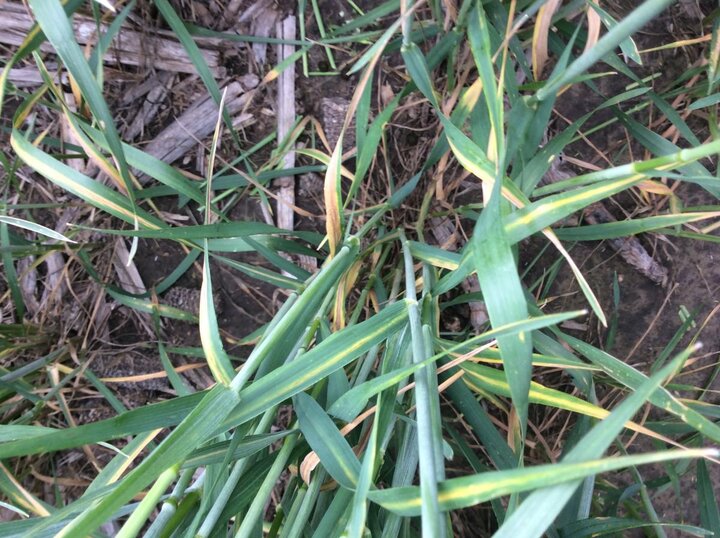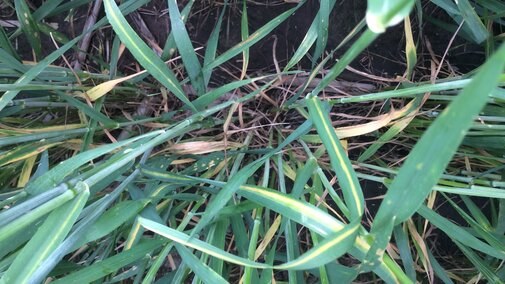Cephalosporium stripe is developing in wheat fields in west central Nebraska. The disease has been seen in multiple growers’ fields as well as two university research fields. The incidence of this disease is more this year than it has been in the last three years. This may be due to the weather conditions this spring. It is important for growers to monitor their fields and be familiar with the symptoms.
One to three longitudinal yellowish stripes running through the leafsheat and cum of a maturing green leaf is the diagnostic symptom of the disease. The yellow stripe will become very prominent during jointing and heading.
Cephalosporium stripe is caused by a soilborne pathogen, a fungus, and is more severe in wheat fields that follow wheat or other susceptible cereal or grasses. Oat, barley, rye, triticale, and grasses such as downy (cheatgrass) brome are susceptible to the disease. This year, the disease has been more prevalent in low, wet areas of the field and acid soils. In most of the fields, the symptoms are all on the lower leaves.
Stand may be reduced when disease is severe. Yield losses are variable, ranging from insignificant to 80% when severe. The losses typically occur from premature death of tillers and reduced seed set.

Management
Crop rotation with non-host crops such as corn or bean and management of potential weed hosts such as brome will help to reduce inoculum in the soil. There are no highly resistant cultivars, but growing cultivars that are moderately resistant will be helpful.
Early seeding relative to the recommended seeding date for the area favors the disease. Seeding 10 days later can significantly reduce the disease. Low pH soils (under 6.0) have shown to increase the development of Cephalosporium stripe.

